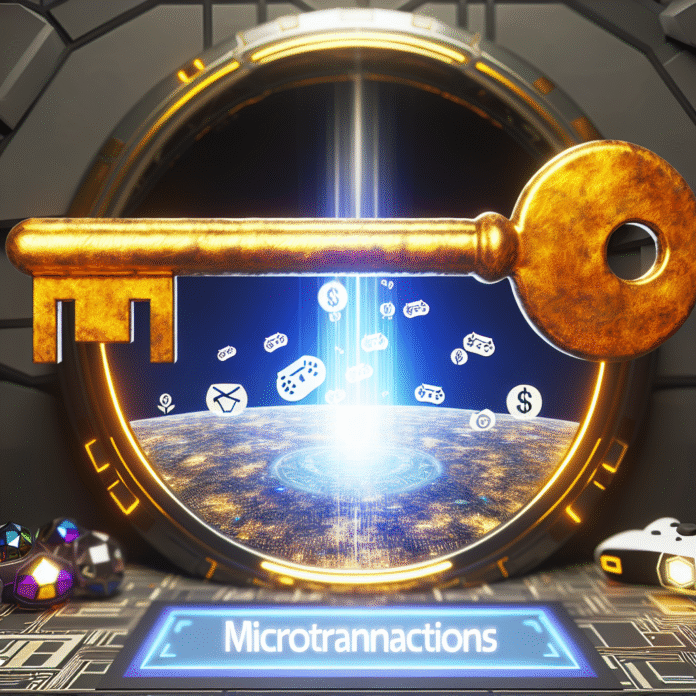Unlocking the Truth: How Microtransactions Are Shaping Gaming’s Future
Imagine this: you’re deep in a thrilling game, the kind that pulls you in from the first moment and doesn’t let go. You’ve just defeated a tough boss, only to be greeted with a pop-up that says, “Want to unlock a special weapon? Just pay $5!” Sound familiar? Welcome to the world of microtransactions—an increasingly common aspect of modern gaming.
Once viewed skeptically, microtransactions have morphed into a multi-billion dollar industry, shaping not just how games are developed but also how we, the players, engage with them. Let’s unpack this phenomenon and explore its implications on gaming’s future.
Understanding Microtransactions
Microtransactions are small purchases made within a game that typically allow players to buy virtual goods—everything from skins and customization options to entire game levels. They often cater to both hardcore and casual gamers, as they offer something for everyone:
- Hardcore Gamers: They might see microtransactions as a shortcut, helping them gain competitive advantages.
- Casual Gamers: For them, spending a few bucks here and there can enhance their gaming experience without a large commitment.
However, what started as optional purchases has slowly crept into the core of many game mechanics, making it essential to understand how these financial models work.
The Rise of the “Freemium” Model
One of the most significant shifts in the gaming industry has been the rise of the “freemium” model. You can play for free, but if you really want to enjoy the full experience, you’ll need to cough up some cash. This model has transformed how developers approach game design.
For example, games like Fortnite and PUBG revolutionized the industry by offering free gameplay while monetizing through cosmetic microtransactions. Players can purchase outfits, emotes, and even battle passes, often leading to huge revenue streams. The appeal lies in the fact that these purchases do not affect gameplay directly but instead enhance the visual aesthetics—something many players are willing to pay for.
The Wallet and the Wardrobe: Consumer Behavior
Have you ever noticed how much easier it is to spend money on virtual items than on tangible purchases? It turns out there’s psychology at play. Parting with real money feels more significant, but when it comes to virtual currency or in-game purchases, it’s almost like trading digital stickers.
This idea is backed up by popular research, which suggests that microtransactions can trigger a sense of instant gratification. This was perfectly illustrated in the wildly successful game Animal Crossing: New Horizons, where players often purchase in-game currency, Nook Miles, allowing them to build and customize their dream islands. Many players report spending considerably more on their digital experiences than they would on physical goods.
Controversies and Challenges
As with any trend, microtransactions come with their share of controversies. Some argue they create an uneven playing field, especially in competitive games. Players who can afford to spend more may outperform those who cannot, raising concerns about fairness. This has led to significant discussions in the gaming community about “pay-to-win” models—where monetary investments directly influence gaming outcomes.
Take the case of Star Wars Battlefront II, which faced immense backlash due to its heavy reliance on microtransactions and the perception that skill mattered less than spending power. The outrage eventually led the developers to rethink their monetization strategies, even pausing the microtransaction system temporarily.
With this in mind, developers are beginning to revisit how they implement microtransactions. Balancing profitability with player satisfaction has never been more essential.
The Future: Looking Ahead
So what does the future hold for microtransactions in gaming? It seems the trend is here to stay, but with the potential for evolution. Here are a few possibilities:
- More Transparency: As players become aware of monetization strategies, there’s a growing demand for transparency in how microtransactions work. Game developers may need to adapt by clearly outlining what players can expect from purchases.
- Mix of Models: Expect to see a blend of traditional pricing models and microtransactions. Some games may feature full-price purchases, accompanied by cosmetic options to enhance personalization.
- Community Input: Game developers are increasingly engaging players in discussions about monetization. Polls, forums, and beta tests could shape how future microtransactions are designed.
As gaming technology advances, we might also witness the rise of new forms of microtransactions, potentially encompassing NFTs or blockchain technology. However, developers will have to navigate this landscape carefully, balancing innovation with the user experience.
Final Thoughts
Microtransactions are shaping the future of gaming, transforming both how games are developed and how players interact with them. Whether you revel in the thrill of customizing your character with the latest skins or prefer to earn everything through gameplay, microtransactions are undeniably part of the current and future gaming narrative.
As gamers, it’s vital to engage in conversations about these practices, advocating for fairness while enjoying our virtual adventures. After all, at the heart of gaming lies an intrinsic joy—the thrill of exploration, achievement, and, yes, sometimes, a little indulgence.

